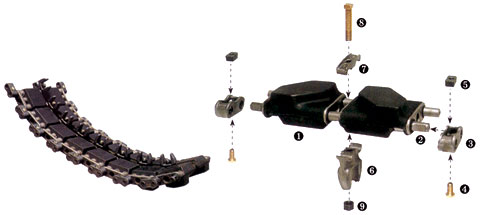Thanks for all the replies guys, I greatly appreciate it. The cable roller idea does seem to hold up really well. My instructor specifically stated it was from a tank track, however I know this to not be the case. After observing the FTIR Spectra its been determined the material is MSBR (Modified Styrene-Butadiene Rubber). I honestly thought it may have been the center section of a guide roller for the track, where the alignment jegs protruding out from the track follow the V-groove in the roller to help keep the track centered. This could possibly explain the torsional shear, even though its not a driven roller. Maybe something became stuck in the track, or maybe it was damaged, and as the track rolled over the roller it pulled the debris or damaged part through the roller causing it to catch and basically shear the roller. The shaft in the picture is part of the component. But I don't believe this part is big enough to be a track idler or return roller.
I'm open to any and all ideas of what it may be or possible loading conditions you guys might think up.
If it is a cable roller, and it was simply just made of the wrong material and being subjected to a very high load (40 tons) at an off-camber angle, would that cause grooving or like deformation in the rubber? As the part sits right now it doesn't show any signs of grooving or like tearing.
Thanks again for the help guys.
Last edited by Reagans Rascals; 10-18-17 at 07:47.
When you can't make them see the light, make them feel the heat.. - Ronald Reagan
smoke and drink and screw..that's what I was born to do.. - Steel Panther




 Reply With Quote
Reply With Quote



Bookmarks